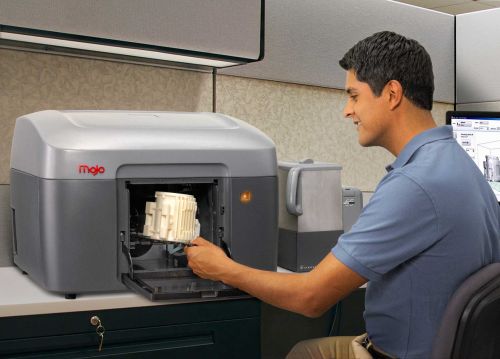The number of manufacturers producing end-use parts through additive manufacturing is relatively small, but the number of manufacturers seriously considering doing this is large. What will it take for some of these companies to add this direct digital production to their capabilities? A 3D printing system from Stratasys promises to make additive manufacturing much more accessible to companies like these by lowering the threshold for adopting the technology. The company’s new “Mojo” is a desktop 3D printing system that is priced at less than $10,000, can be leased for less than $200 per month, and includes features aimed at making 3D part-making more intuitive and seamless than other approaches to production.
Like other 3D printers from Stratasys, the Mojo unit builds parts through fused deposition modeling (FDM)—a process that creates resilient plastic parts out of thermoplastic materials comparable to those of injection molding. Applications of FDM therefore extend beyond prototyping to include functional tools, fixtures and end-use parts. Modern Machine Shop’s “Additive Manufacturing” supplement recently profiled an injection molder now using FDM to make short-run mold tooling in cases in which the quantity is too small to justify a steel mold, and end-use production parts in cases in which the quantity is too small to justify molding. The Mojo system now brings the potential for precisely this type of part-making to the desktop, provided the part can fit within the unit’s build envelope of 5 × 5 × 5 inches.
A software interface developed for this system simplifies 3D printing, the company says. The print wizard imports the CAD model and steps the user through decisions related to orientation and scaling, as well as the number of pieces to be built in the cycle. A hardware innovation intended to further simplify the process is the integration of material spool and print head into a single package (the “QuickPack” engine). Thanks to this design, the company says loading material into the Mojo unit is a straightforward step that is similar to snapping an inkjet cartridge into an office paper printer.


